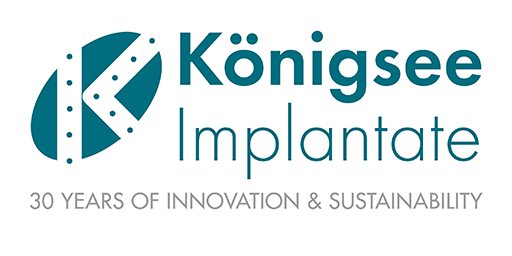HISTORY OF THE RADIUS PLATE 3.5
Pioneer in the development of angular stable implants
Innovative implants
In 2003, an idea became a development project between Dr. med. Uwe Petereit and Königsee Implants. Together they developed the world’s first stable-angle distal radius plate 3.5 and received the “Most Innovative Product of the Year” award. With this implant, three stable-angle screws in the plate head were possible for the first time. An absolute novelty in the field of osteosynthesis.
Classic as a pioneer
The anatomical shape of the plate in combination with the angular stability or variable angular stability made it possible to treat all extra-articular and almost all intra-articular fractures without supplementary measures. Monoaxial angular stability had the advantage of always forcing reduction to near anatomical conditions. In intra-articular comminuted fractures, the variable angular stability offered an excellent prerequisite for positioning the screws adapted to the individual fracture situation.
Suitable products for every fracture
The distal radius plate 3.5 was constantly improved and further developed in collaboration with Dr. med. Uwe Petereit, and so the original “Classic” variant gave rise to the additional product variants Vario, Minor, Quadro and Twin. The Classic and Minor radius plates were available as stable-angle and variable-angle versions.
Deservedly retired
It was very difficult for us to make the decision to take our long-standing flagship, the distal radius plate 3.5, off the market in the near future. However, the fact is that a new generation of radius plates already meets the high demands of modern implants, taking into account the different fracture shapes. Our new radius plate range delivers better functional results and convinces with a reduced complication rate.
Facts about the Radius Plates 3.5
The “Classic” had 3 holes in the head area and was available in angle-stable and variable angle-stable versions. The further development “Vario” had 3 connected holes for screws in the head area. Our “Minor” also had 3 holes in the head area, but a narrower head width. It was also available in angle-stable and variable angle-stable versions. “Quadro” convinced with 4 holes in the head area for better fracture care. And the last development in the family of radius plates 3.5 was the “Twin”. It had 2 rows with a total of 5 holes in the head area.
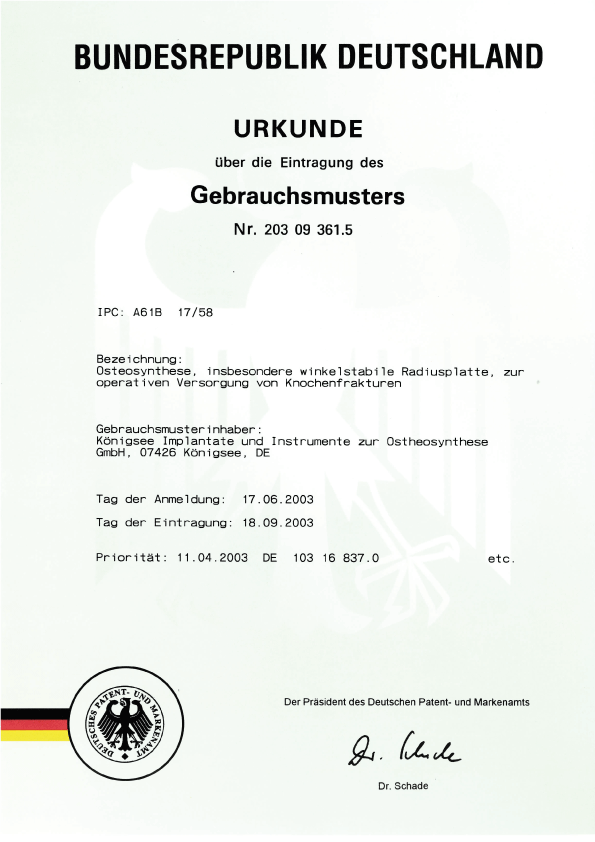
OTHER RADIUS PLATES FROM OUR DEVELOPMENT
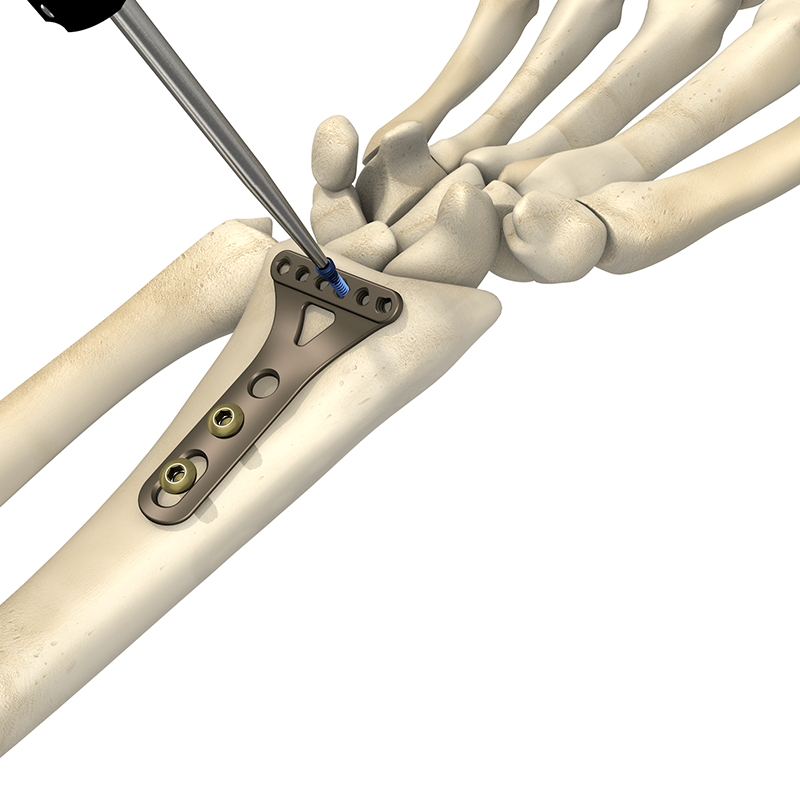
Radius plate 2.0 for more flexibility in fragment fixation
As early as 2004, we expanded our range with the Radius Plate 2.0/3.5. in cooperation with Dr. med. Klaus-Dieter Haselhuhn. Due to the smaller screw dimensions, it offers the possibility to use more screws in the plate head and thus to fix more bone fragments. This implant is available as a dorsal and palmar version.
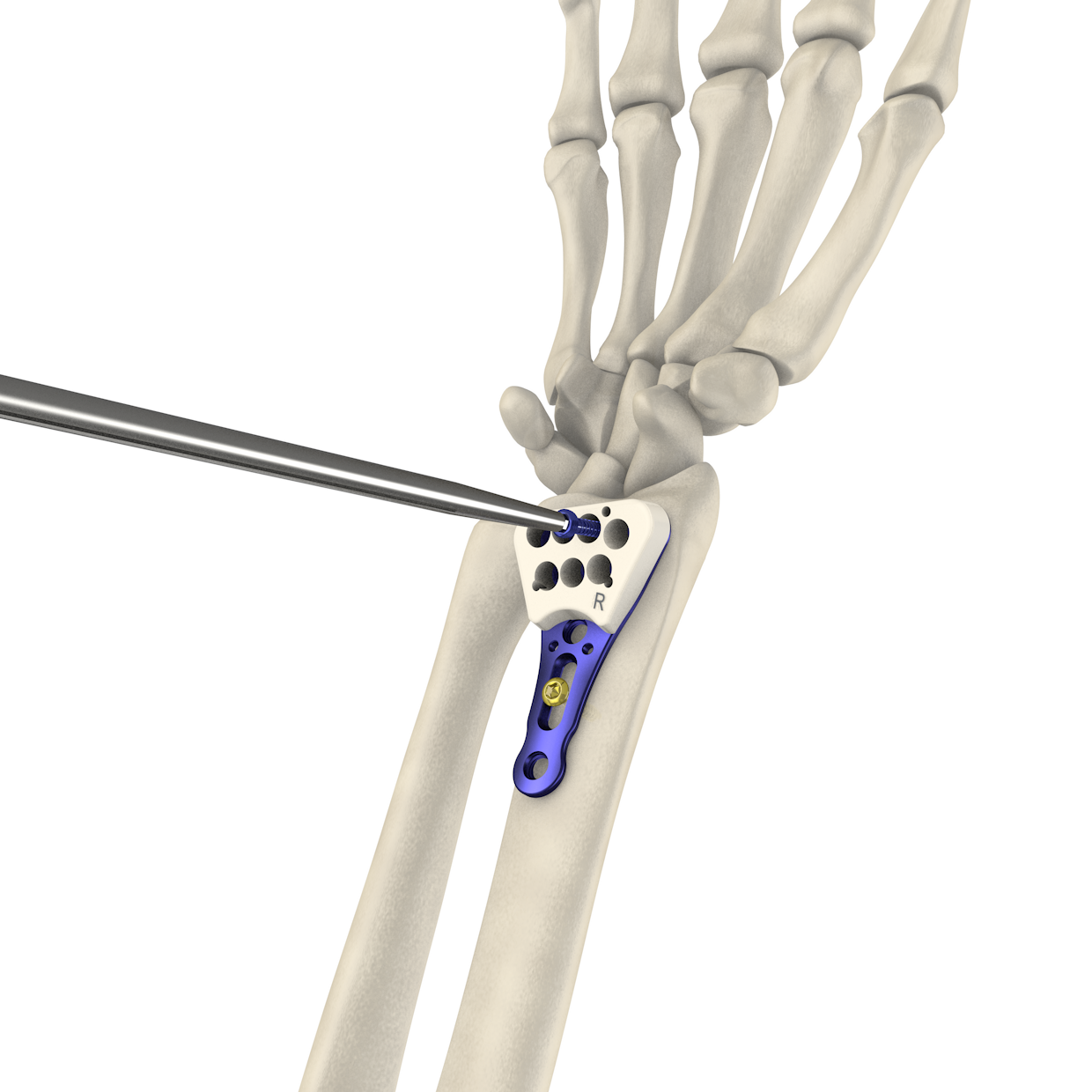
Radius plate 2.7 with adapted anatomical shape
Im nächsten Entwicklungsschritt entstand die variabel winkelstabile distale Radiusplatte 2.7 mit Dr. med. Klaus-Jürgen Maier. Hierbei lag das Augenmerk auf der Verwendung der dünneren Schrauben im Plattenschaft. Desweiteren wurde eine zweireihige Schraubenanordnung im Kopfbereich geschaffen, um auch Kleinfragmente fixieren zu können. Die Platten gibt es mit zwei verschiedenen Kopfbreiten, die schmale Variante mit 5 Kopflöchern und die breite Variante mit 7 Kopflöchern. Die Schrauben können in einem Winkel von ± 15° schwenkbar eingebracht werden.
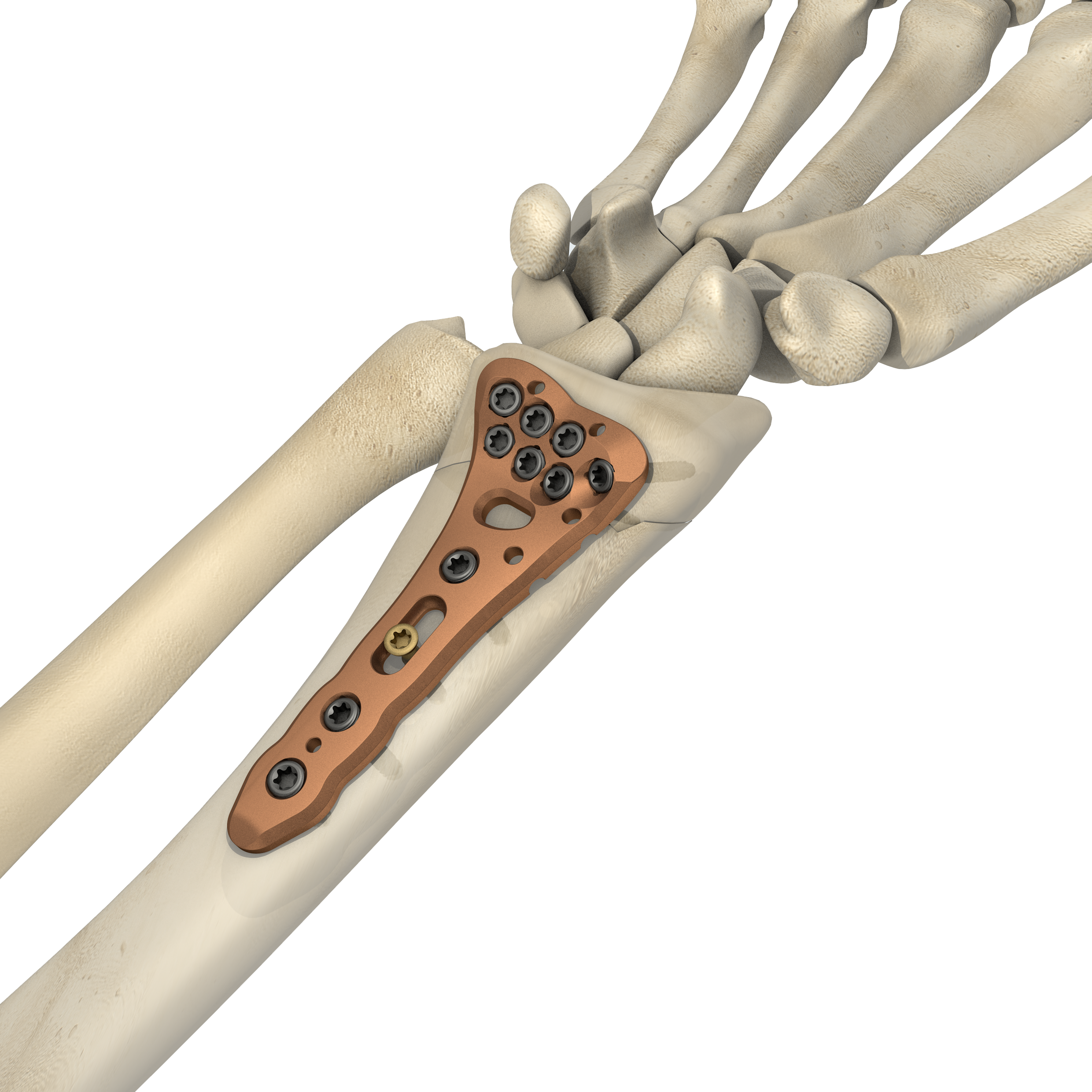
With the radius plate 2.4 even closer to the optimal supply
Im Jahr 2017 reagierte Königsee Implantate auf die Nachfrage nach dünneren, schlankeren Platten. Gemeinsam mit Dr. med. Markus Graf entstand die variabel winkelstabile distale Radiusplatte 2.4, welche zusätzlich zu der dünneren Ausführung noch einen abgeflachten Plattenkopf zur Vermeidung von Weichteilirritationen erhielt. Auch die Radiusplatte 2.4 gibt es mit zwei verschiedenen Kopfbreiten, einmal mit 7 Kopflöchern und einmal mit 9 Kopflöchern in jeweils 2 Reihen. Im Jahr 2020 wurde zusammen mit Prof. Dr. med. Uwe Joosten eine weitere Variante der distalen Radiusplatte 2.4 auf den Markt gebracht, welche die Positionierung entlang der Watershed-Linie berücksichtigt.
Do you have any questions or would you like to order the product?
Tel.: +49 36738 498-550
